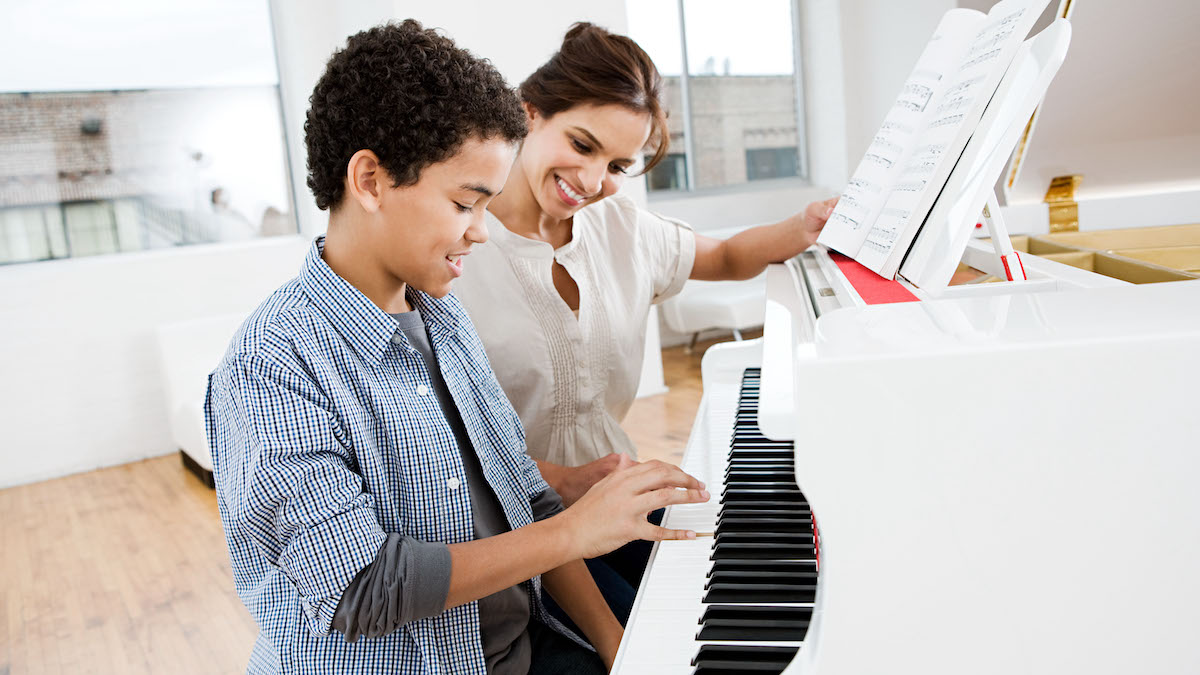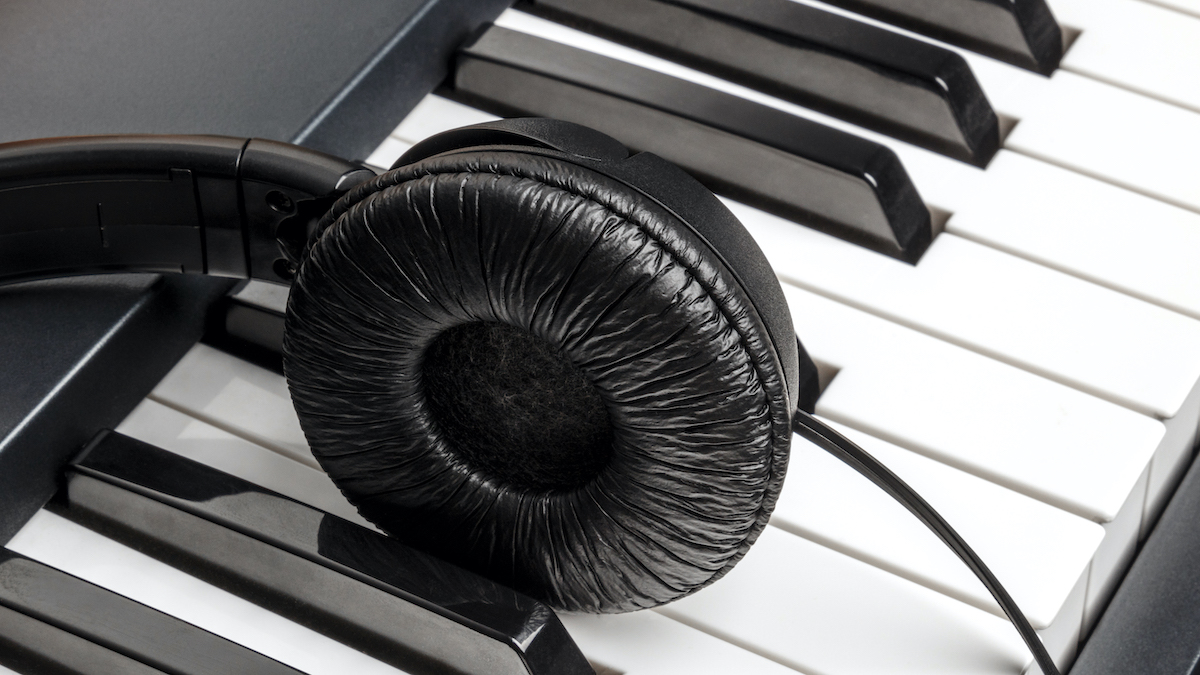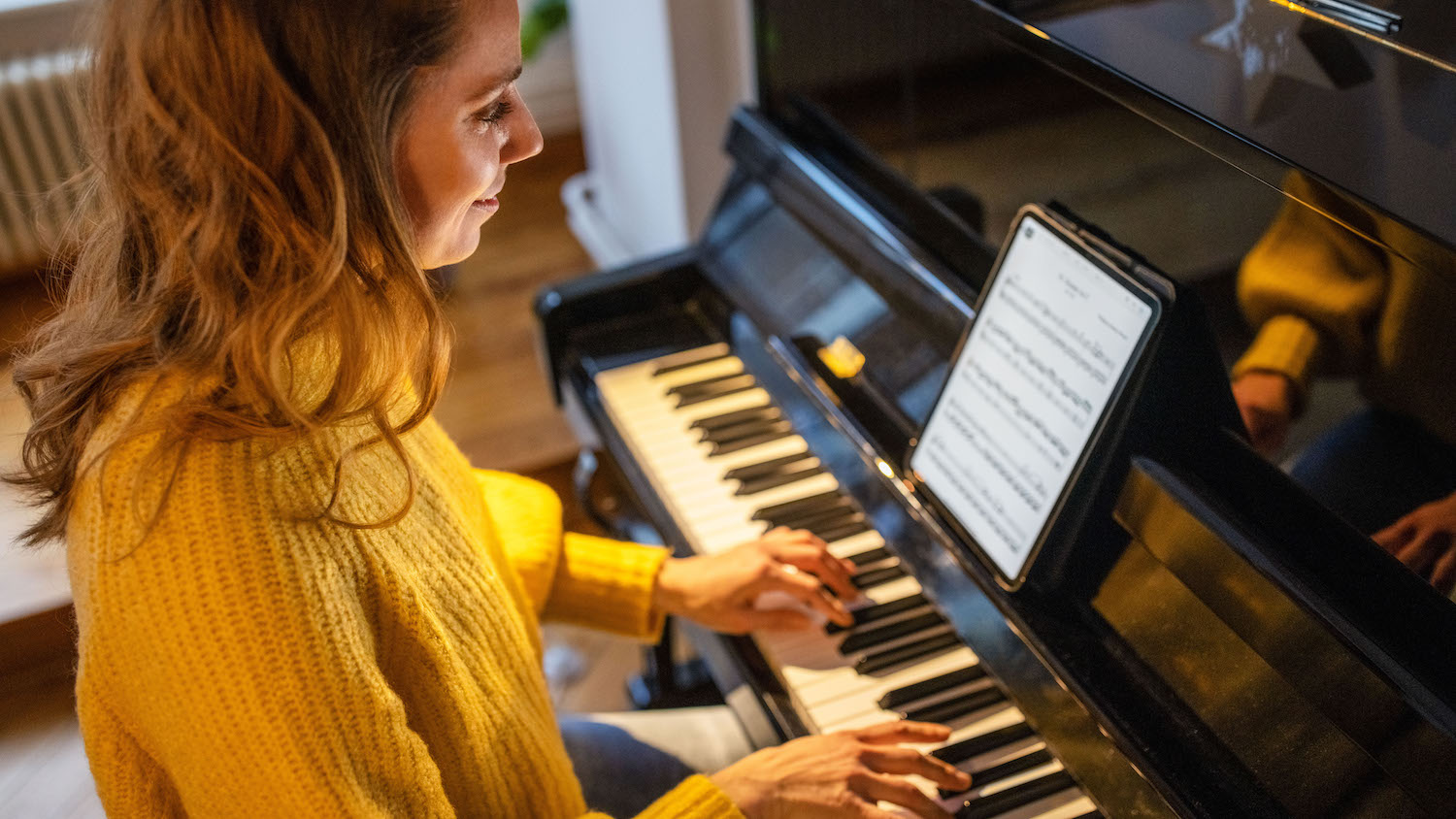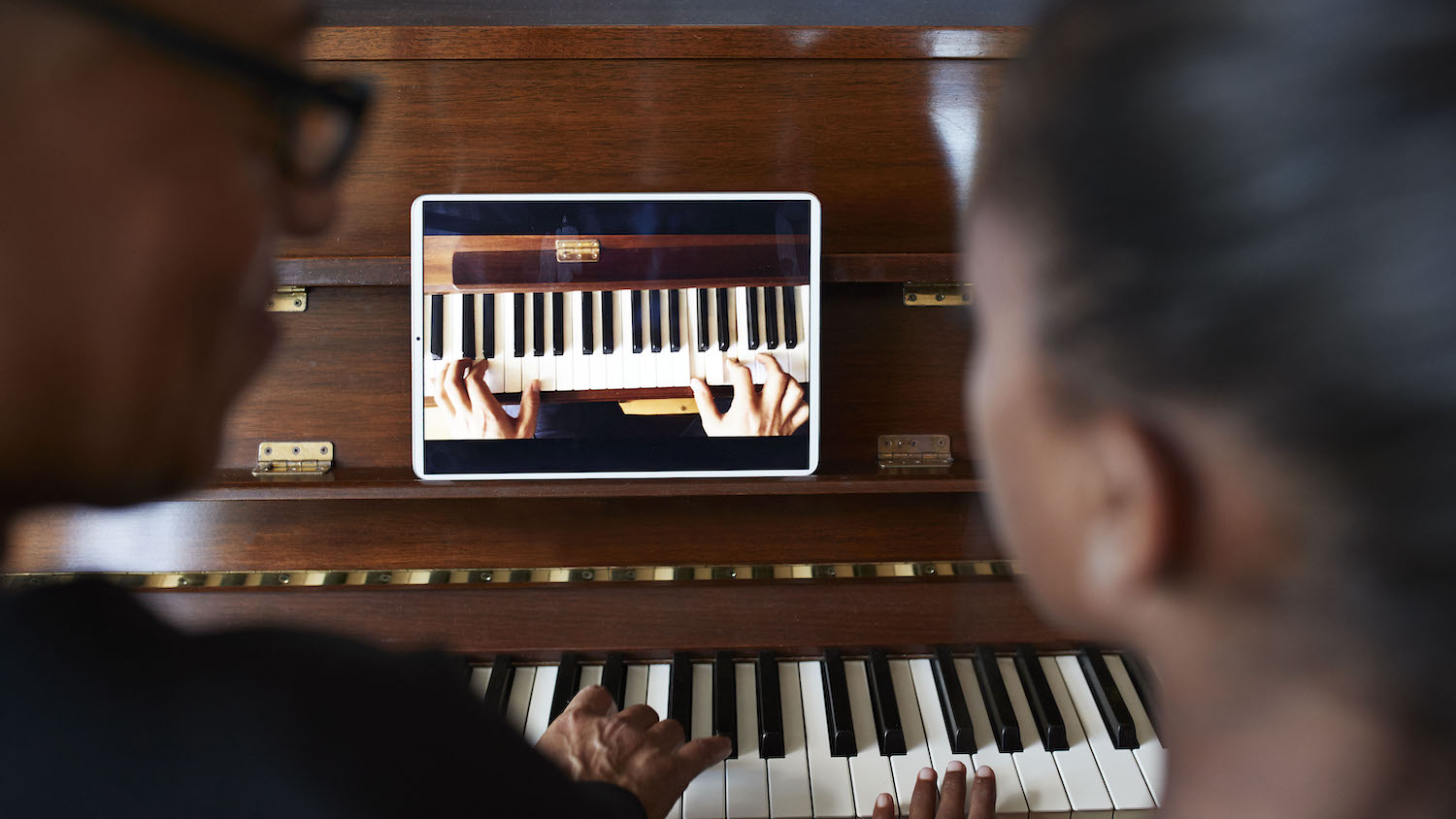Can you teach yourself to play the piano?
With so much online content available, is it possible to learn your way around the keys without the aid of a piano teacher?

Playing the piano is a joyous thing to be able to do at any age, a fulfilling and valuable life skill that can bring you untold hours of enjoyment, so it’s no surprise that thousands of people decide to learn to play piano every day. The question is, do you really need costly in-person lessons, or can you teach yourself to play the piano for free in the comfort of your own home?
The broad answer to this is a resounding yes - especially in today’s climate where YouTube tutorials proliferate in abundance and there are many dedicated online piano lessons resources available to help you learn to play at your own pace - with free trials available and reasonable monthly subscription fees. As with any self-taught endeavour, your degree of success will depend a lot on your innate abilities, but you can definitely make progress whatever your ability.
Back in the pre-internet era, the most common method of self-teaching for non-classical players was playing along to songs on the radio by ear. Now, however, we’ve never had it so good, with a wide range of options for budding keyboardists who don’t want to take the more traditional lesson-based route. So what steps do you need to take exactly?
Get your hands on an instrument

Some digital pianos such as Roland’s GO:PIANO GO-88P feature Bluetooth audio functionality. This means they can stream audio from services such as Apple Music and Spotify through the keyboard’s onboard speakers so you can then jam along over the top using the built-in sounds, making for a fun and efficient way to learn the piano.
There are various factors that can determine what type of beginner keyboard is best for you to learn on. If you’re headed down the traditional piano route, but don’t have an acoustic piano in the house, a digital piano with 88 full-size weighted keys and high quality sampled acoustic piano sounds is your best bet. If you’re just after having some fun playing keyboards along to your favourite songs, almost any entry-level home keyboard will suffice. For this article, we’re going to lean more towards the traditional piano route, as this approach will effectively cover both bases.
You’ll be much more motivated if settling down to play your piano is a faff-free affair, so it’s preferable to find an instrument that you can just sit down at, switch on and play. Most big manufacturers - the likes of Yamaha, Roland, Kawai, Korg or Casio - make excellent affordable, entry-level and beginner digital pianos with built-in speakers that can spring into action at the touch of a single button. The Roland FP-10 or Yamaha P-45 are popular example models.
Get familiar with the keys

Learning the piano is fun and exciting, but also challenging, and one big problem self-starters often face is knowing just where to begin. So, once you’ve got yourself an instrument, start by taking the time to get to know it. Familiarise yourself with the layout of the keys and get to know their names - for instance, C is always just to the left of each cluster of two black notes, while F is to the left of each cluster of three black notes, and so on. If you use sticky labels to help with this, make sure they’re easily removable so they don’t damage your piano’s keys if and when you attempt to remove them.
Get some exercise
There are loads of basic exercises to help get you off the ground with basic dexterity, finger strength and independence, but there’s no substitute for good old scales. Universally vilified by students pretty much everywhere, there’s no doubt that scales are a great way to familiarise your fingers with the keys. The most basic is the C major scale.
Want all the hottest music and gear news, reviews, deals, features and more, direct to your inbox? Sign up here.
Catch the Tube
YouTube is a phenomenal resource for free piano tutorials, either for general exercise ideas and technique or for showing you how to play a particular piece or song. Just Googling the title of a song will invariably bring up numerous video tutorials on how to play it on the piano. The more of these you watch, the more you’ll get an idea of which channels provide the most worthwhile content. Quality-wise, it can be a bit of a mixed bag, but good ones to start with include channels like Pianote , Aimee Nolte Music, Bill Hilton, Piano Lessons on the Web and Mangold Project. Many of these also offer paid subscriptions with access to even more content.
Online lesson services and apps

A step up from the free tutorials that abound on YouTube are the various subscription-based apps and online piano lesson services that exist. These include Simply Piano, Skoove, Playground Sessions, Synthesia and Yousician.
Time-limited subscriptions to some of these are often bundled with the purchase of a digital piano, giving you a free taster of the experience.
You can explore more in our guide to the best online piano lessons.
Practice and pitfalls
One of the main disadvantages of teaching yourself the piano is that, without the presence of a physical teacher, it can be much more difficult to adopt the correct posture, hand position and fingering. Conversely, this makes it much easier to develop bad habits that can be difficult to unlearn later on if you don’t have a guiding presence next to you to steer you right.
The three most important items on every budding pianist’s to-do list are listed below:
- Practice
- Practice
- Practice
You get the idea. Regular practice is as important as it is unavoidable, but lack of motivation and self-discipline are big potential obstacles for self-learners. You need enough self-discipline to schedule and stick to regular practice sessions - setting aside a regular time slot each day to sit down, switch on and play will benefit you enormously in the long run.
Meanwhile, setting yourself achievable goals will help to keep you motivated - for instance, learning a new song every week, or timetabling a regular weekly session where you play something for a friend or family member. This will give you a consistent target to aim for, but try to make it more about motivating yourself to practise rather than about impressing people with your new-found skills.
As an example of an effective practise regime, an hour a day could divide up into 15 minutes on technique (e.g. scales / arpeggios), 10 mins sight-reading practice or interval training, then the remaining 30 mins learning a song or classical piece.

Conclusion
Looking at all the options available to today’s potential pianists, it’s clear to see that teaching yourself to play the piano is not only possible, it’s undoubtedly a whole lot easier than it used to be. Of course, unless you’re supremely gifted, it’s unlikely that you’ll be able to propel yourself to concert-pianist level without some kind of outside tuition, but if all you want is to play casually along with your favourite songs for your own entertainment, there’s a wealth of resources available online to get you started. So what’s stopping you?
Dave has been making music with computers since 1988 and his engineering, programming and keyboard-playing has featured on recordings by artists including George Michael, Kylie and Gary Barlow. A music technology writer since 2007, he’s Computer Music’s long-serving songwriting and music theory columnist, iCreate magazine’s resident Logic Pro expert and a regular contributor to MusicRadar and Attack Magazine. He also lectures on synthesis at Leeds Conservatoire of Music and is the author of Avid Pro Tools Basics.
